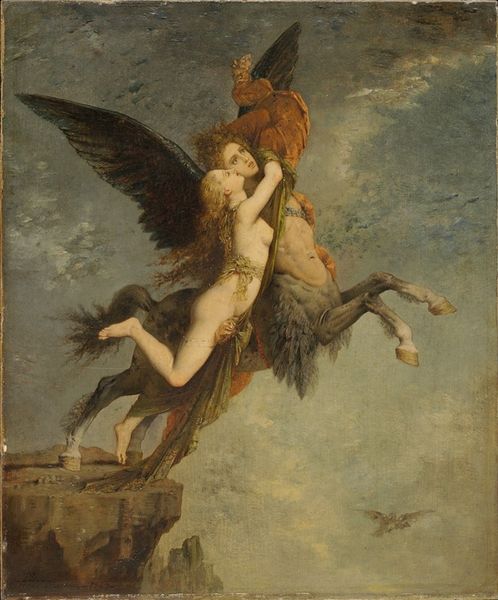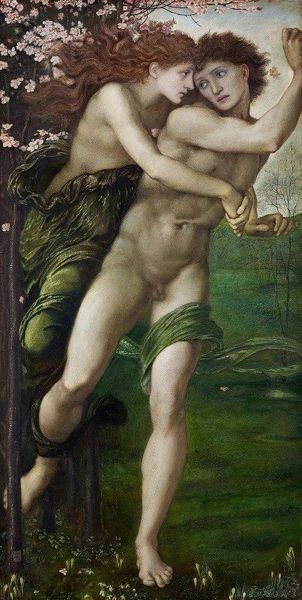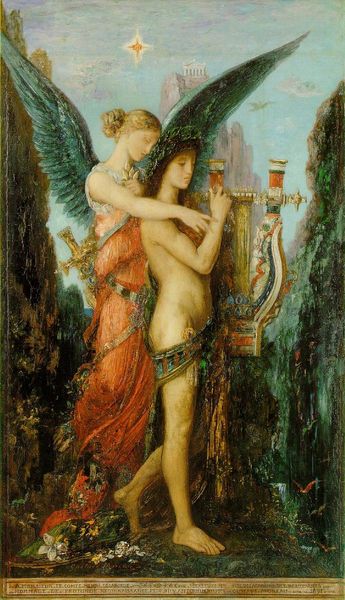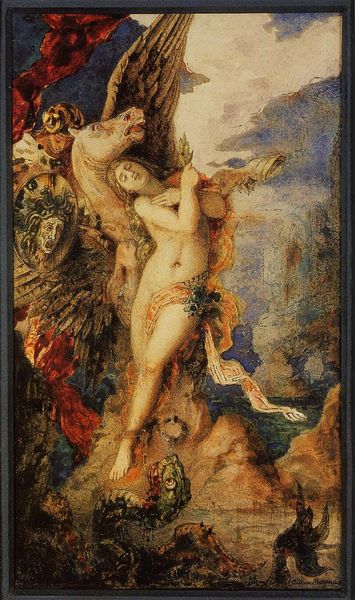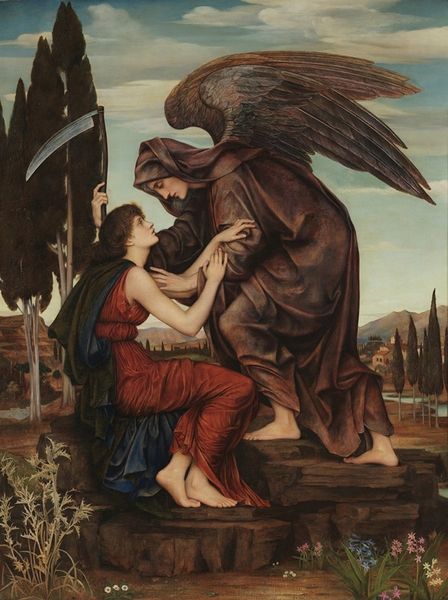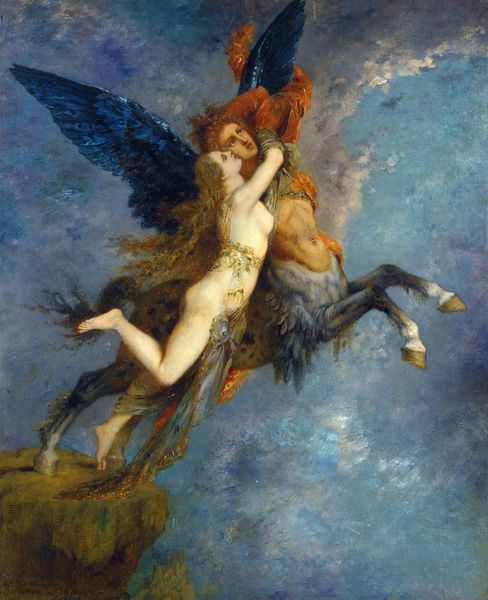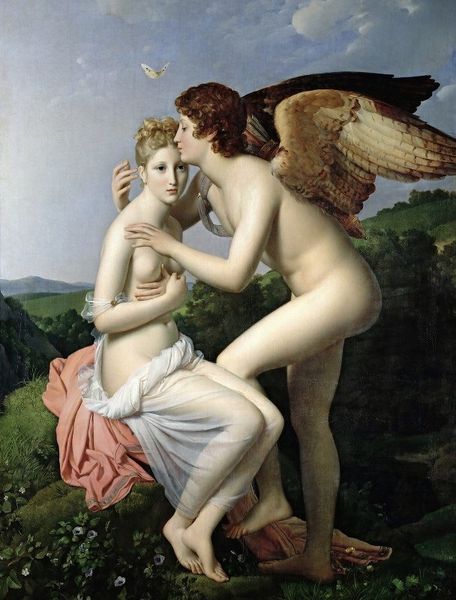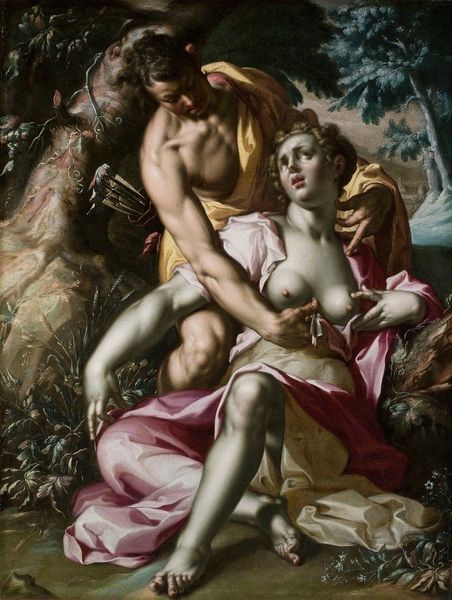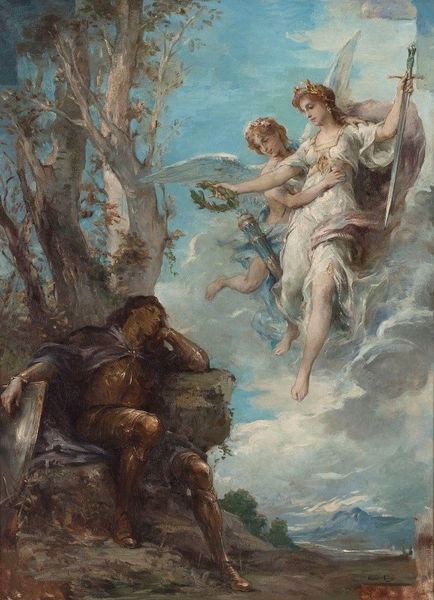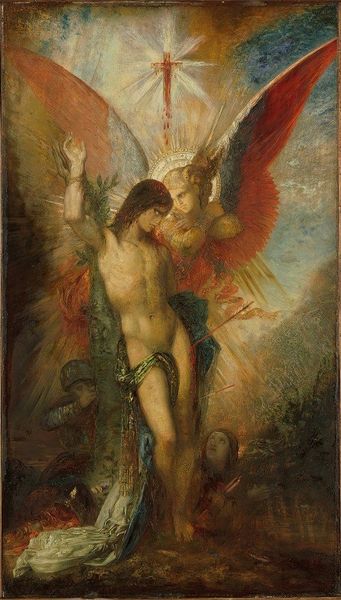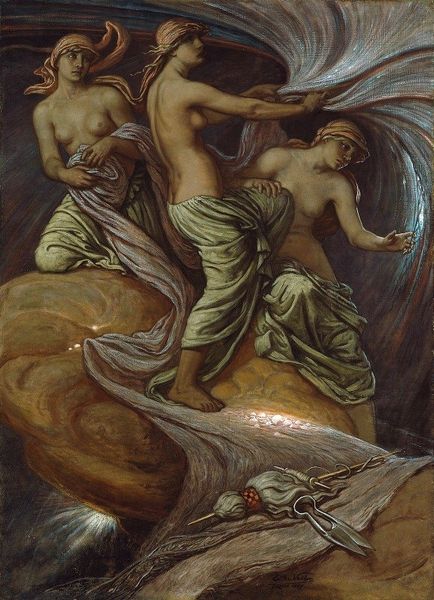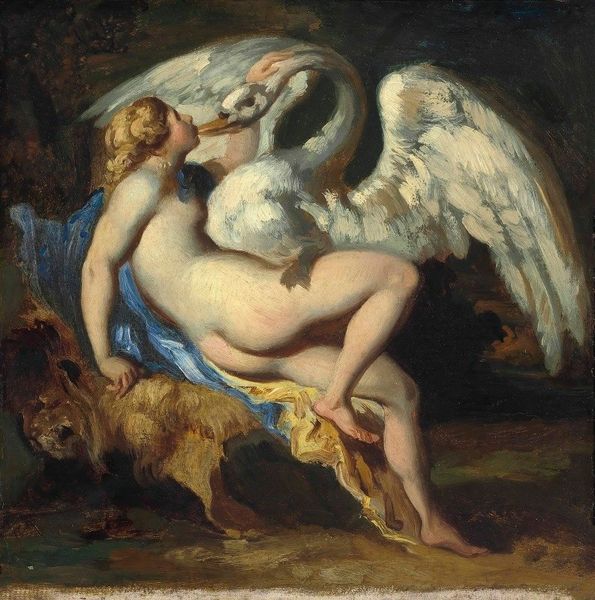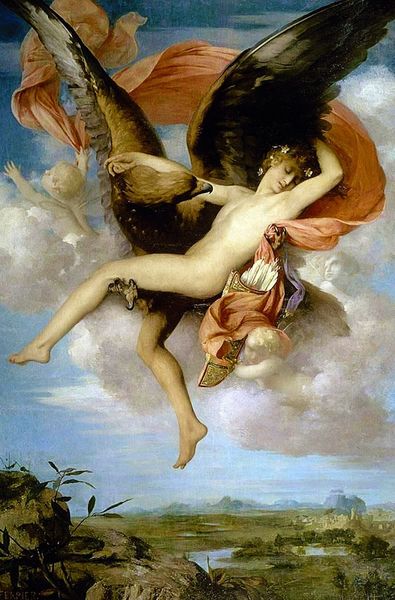
oil-paint
#
gouache
#
narrative-art
#
fantasy art
#
oil-paint
#
figuration
#
oil painting
#
underpainting
#
mythology
#
symbolism
#
history-painting
#
academic-art
#
watercolor
Copyright: Public Domain: Artvee
Gustave Moreau painted "Oedipus and The Sphinx" during a time of rapid social and political change in France. Moreau was active during the French Second Empire, a period characterized by industrialization but also significant class tensions. Here, Moreau departs from traditional representations of the Oedipus myth. Rather than depicting a violent encounter, he presents a moment of intense psychological exchange. Consider the gaze between Oedipus and the Sphinx, which complicates the power dynamics. The Sphinx, often portrayed as a monstrous figure, here embodies a seductive, almost vulnerable presence. Oedipus, in turn, appears less a hero than a figure of youthful uncertainty. The androgynous features of both figures further blur conventional gender roles. In doing so, Moreau invites us to question the fixed categories of identity and knowledge. It is an intimate portrayal that exposes the internal struggles of identity and challenges the established order.
Comments
No comments
Be the first to comment and join the conversation on the ultimate creative platform.
